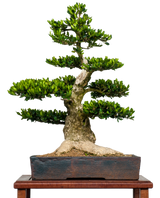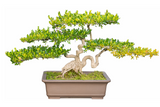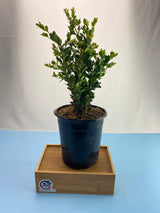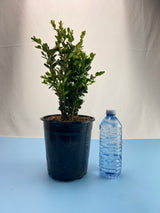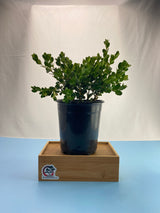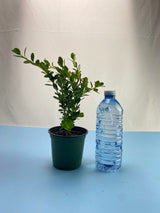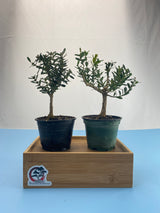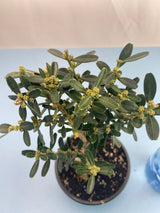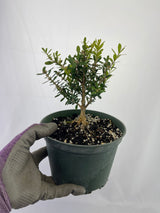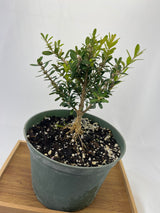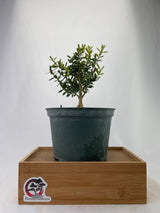Boxwood
Boxwood:(Buxus), This striking shrub has a long history of being used in Bonsai design, highly desirable for its growth habit and dense foliage. There are over 70 varieties of Boxwood, but the most commonly used in Bonsai are the Chinese Boxwood (Buxus Harlandii) and Japanese Boxwood (Buxus microphylla var. Japonica) and the Wintergem Boxwood cultivar, which is renowned for its hardiness.
Other types of Boxwood can be used in Bonsai design, but we will focus on these three types.
Chinese Boxwood: (Buxus Harlandii) is commonly used as indoor Bonsai, although they are ideally placed outdoors from spring to fall. The Chinese Boxwood is desirable because of its intricate bark, trunk, and slow-growing dense foliage.
Japanese Boxwood: (Buxus microphylla var. Japonica) is a hardy outdoor Boxwood with an upright growth habit and soft branches when young, making it a favourite for styling.
Wintergem Boxwood: (Buxus microphylla var. Wintergem) is the hardiest of Boxwoods, as when most boxwoods leaves turn brown from the cold and wind, the Wintergem maintains its shiny green foliage year-round.
BONSAI CARE
The Chinese Boxwood is semi-tropical and must be brought indoors and kept warm year-round. The Boxwood can be placed in full sun and loves fresh circulating air. Boxwoods will appreciate being outside from Spring to Fall, whether on a balcony or backyard. During winter, the Japanese and Wintergem boxwoods must be winterized but still require light in the winter.
Watering:
- Boxwoods can withstand a little drought, but it is best to keep the soil moist in the summer. Watering on hot days must be done almost daily.
Training:
- Pruning: Boxwoods can be pruned back to one or two buds to promote back budding and short internodes. If the foliage becomes very dense, it is recommended to thin the outer foliage to promote light internally and prevent inner branches and foliage from drying up.
- Wiring: Boxwoods can be wired year-round but gently to prevent scarring on the beige bark.
- Repotting: Boxwoods must be repotted every 2-5 years, depending on age and size. Boxwoods take well to root pruning.
PRODUCT DETAILS
BABY: 6"-10" tall, comes in a 4" grower's pot.
YOUNG: 8"-12" tall, comes in a 6" grower's pot.












